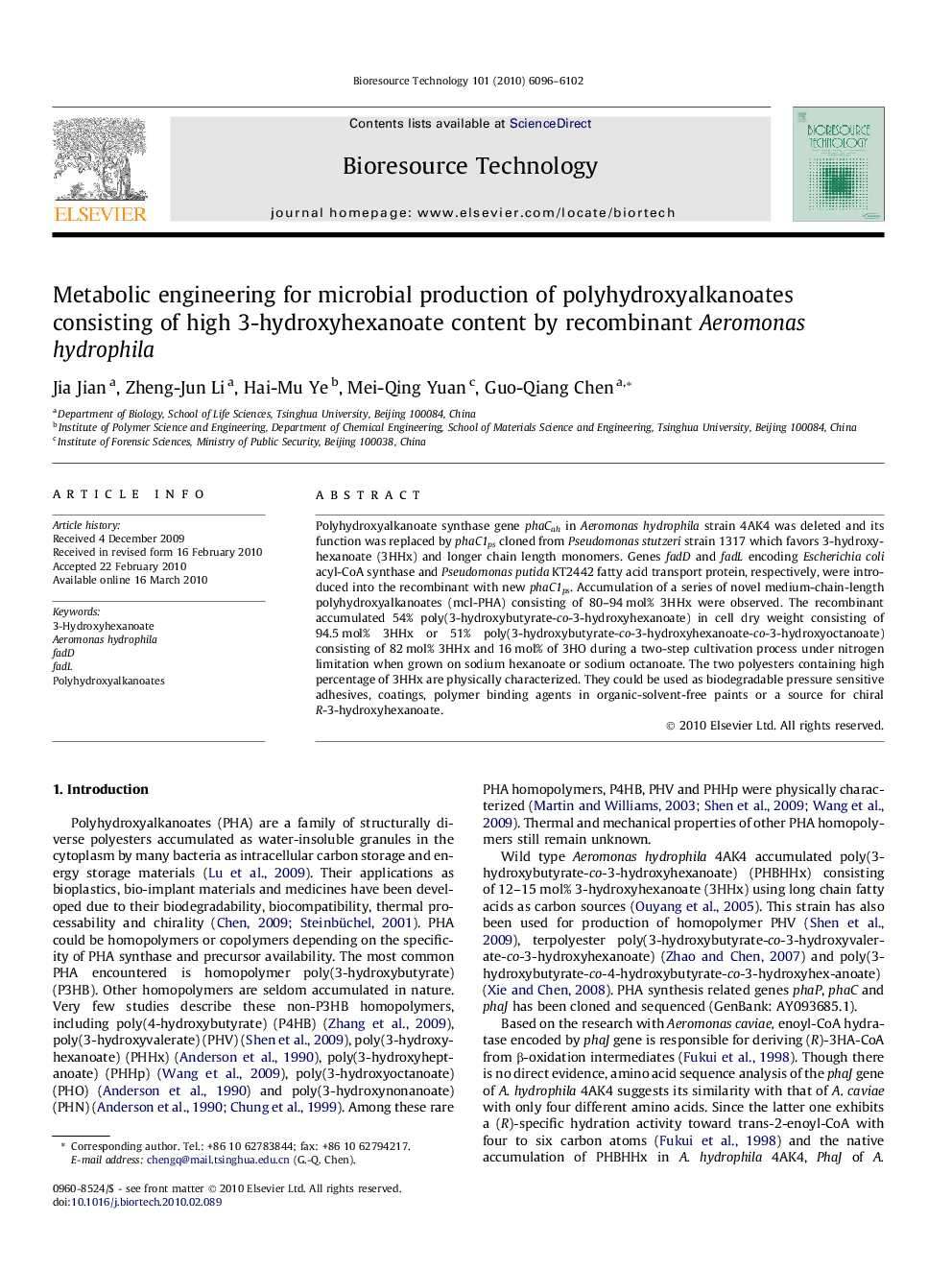| Article ID | Journal | Published Year | Pages | File Type |
|---|---|---|---|---|
| 682520 | Bioresource Technology | 2010 | 7 Pages |
Polyhydroxyalkanoate synthase gene phaCah in Aeromonas hydrophila strain 4AK4 was deleted and its function was replaced by phaC1ps cloned from Pseudomonas stutzeri strain 1317 which favors 3-hydroxyhexanoate (3HHx) and longer chain length monomers. Genes fadD and fadL encoding Escherichia coli acyl-CoA synthase and Pseudomonas putida KT2442 fatty acid transport protein, respectively, were introduced into the recombinant with new phaC1ps. Accumulation of a series of novel medium-chain-length polyhydroxyalkanoates (mcl-PHA) consisting of 80–94 mol% 3HHx were observed. The recombinant accumulated 54% poly(3-hydroxybutyrate-co-3-hydroxyhexanoate) in cell dry weight consisting of 94.5 mol% 3HHx or 51% poly(3-hydroxybutyrate-co-3-hydroxyhexanoate-co-3-hydroxyoctanoate) consisting of 82 mol% 3HHx and 16 mol% of 3HO during a two-step cultivation process under nitrogen limitation when grown on sodium hexanoate or sodium octanoate. The two polyesters containing high percentage of 3HHx are physically characterized. They could be used as biodegradable pressure sensitive adhesives, coatings, polymer binding agents in organic-solvent-free paints or a source for chiral R-3-hydroxyhexanoate.
